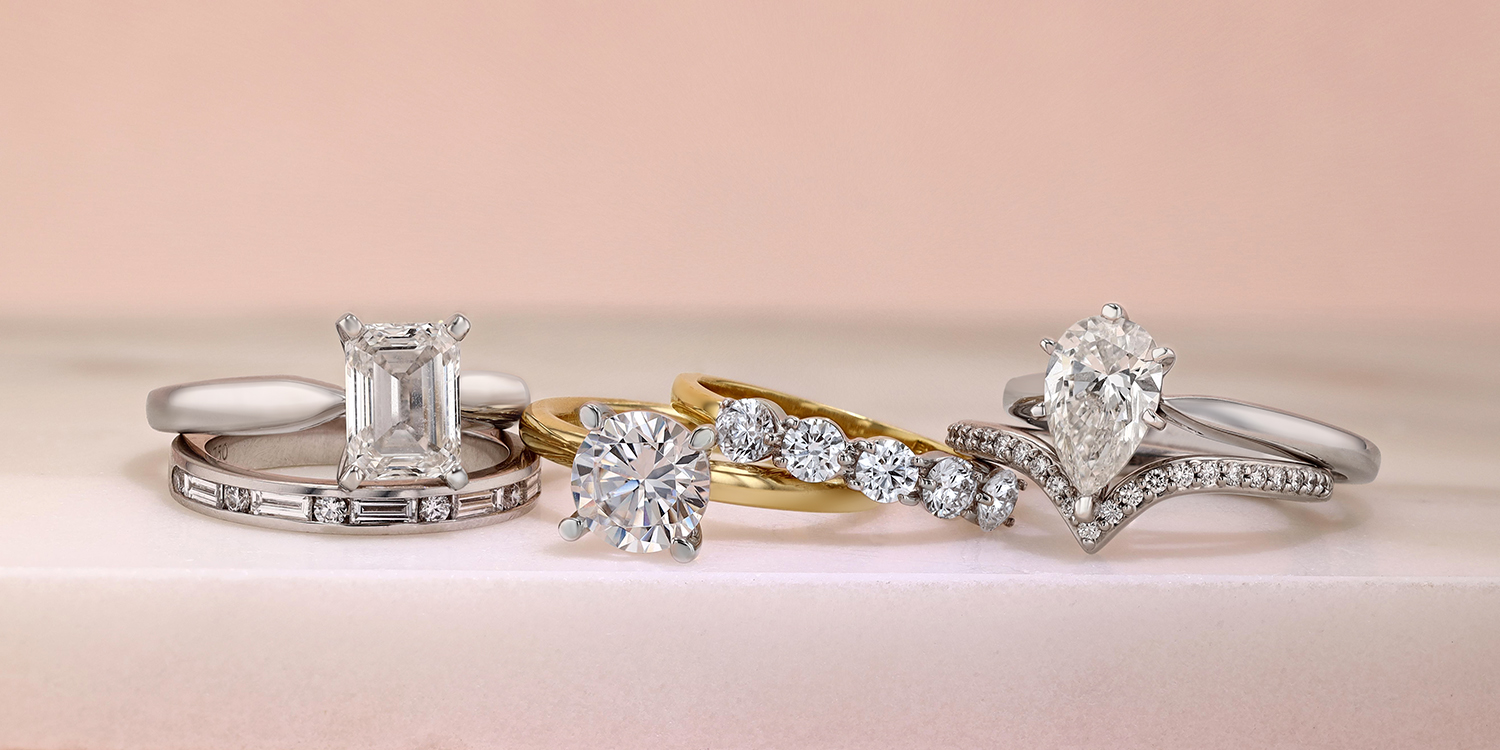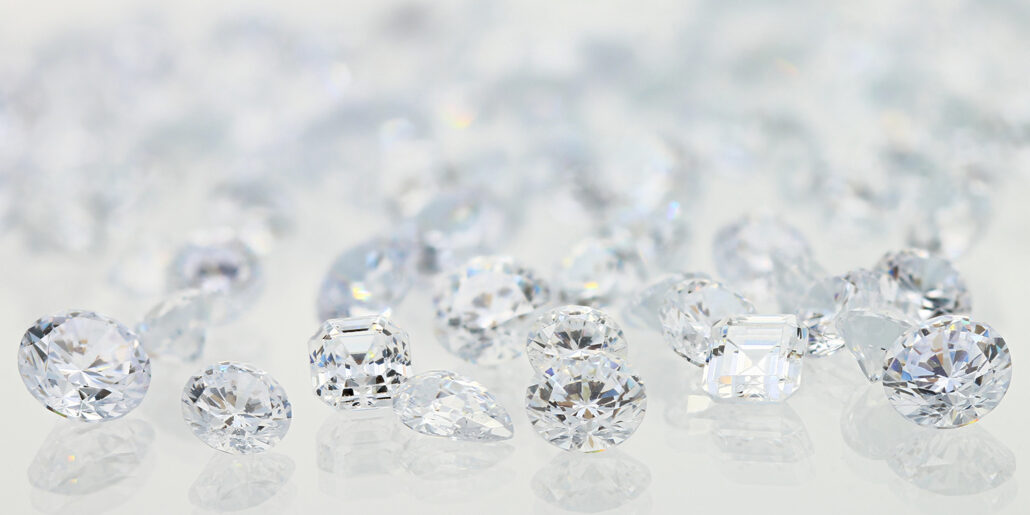Whether you are getting engaged or looking to upgrade your ring, choosing a diamond is one of the most important decisions you will make during the ring buying process. With such an important choice in front of you, we believe it’s essential to be empowered with knowledge about your options. That includes understanding the similarities and differences between lab-grown and mined diamonds. While natural diamonds still dominate the industry, lab-grown diamonds have grown in popularity in recent years and are an excellent option for the price.
Read on to learn more about the similarities and differences between lab-grown and natural diamonds—we think you’ll find that they are far more similar than you ever realized.
Their Origins
The key difference between lab-made diamonds and natural diamonds is their origin. Natural, or mined, diamonds were formed billions of years ago deep within the earth’s crust where intense heat and pressure caused carbon atoms to crystalize, creating beautiful diamonds. Lab-grown diamonds are grown over a 2-3 month period under similar conditions in a laboratory.
This distinction between lab-grown and mined diamonds can be compared to a flower that grew in the wild versus a flower that grew in a greenhouse. Both are still flowers, but their origin stories are different.
Their Qualities & Characteristics
Lab-grown diamonds are real diamonds; they are chemically, structurally and visually the same as a mined diamond. With that said, both diamond options are incredibly durable and share the highest possible rating of 10 on Moh’s Hardness Scale. Because of their composition, both lab-grown diamonds and natural diamonds share an immense beauty and brilliance and are available in a wide array of sizes, shapes and colors.
Like mined diamonds, lab-grown diamonds also have inclusions; however, these inclusions can look slightly different. These differences are subtle enough that they can usually only be seen by a trained gemologist or a gemological laboratory.

Their Value
There are two things to consider regarding a diamond’s value: the initial price and the resale or trade-in value.
Regardless of whether it’s lab-grown or mined, a diamond’s value is appraised based on the 4Cs – cut, color, clarity and carat. While a lab-grown diamond and a natural diamond are almost identical in every way outside of how they are created, lab-grown diamonds tend to be much more affordable. Currently, the price of a lab-grown diamond is approximately 30% less than a mined diamond of the same size and clarity. This considerable cost savings is one of the most popular reasons to choose a lab-grown diamond today.
Natural diamonds are more likely to retain their value over time. Typically, a natural diamond’s resale value is a portion of what the diamond costs new, while a lab-grown diamond can be more difficult to resell. Borsheims offers a trade-in policy for mined diamonds; however, there isn’t currently a trade-in value offered for lab-grown diamonds.
The difference in the overall value of a mined diamond versus a lab-grown diamond comes down to supply. Because natural diamonds take billions of years for nature to create, their supply is limited. Lab-created diamonds are human-made and take only months to produce; therefore, their supply is unlimited, and this boundless quantity drives the price down.
Their Certifications
Both mined diamonds and lab-grown diamonds come with independent laboratory reports that provide grades for the diamond on things like color and clarity. A diamond’s certification is the best way to tell whether it is lab-grown or mined. At Borsheims, our mined diamonds come with a GIA report from the Gemological Institute of America, while our lab-grown diamonds come with a GCAL report.
Their Sustainability
The ethical and environmental impacts associated with diamonds have been a topic of great concern for decades. Fortunately, natural diamonds have come a long way in recent years, and Borsheims ensures that all of our diamonds come from conflict-free sources and are mined in the most ethical way possible. Our Kalahari Dream Diamond Collection™ comes from Southern Africa and is part of a global initiative to help transform communities through every diamond sold. Our Signature Collection is a Borsheims exclusive and features elegant diamond jewelry made from both natural and lab-grown diamonds.
Since lab-grown diamonds are not mined from the earth, they provide a compelling alternative in a world sensitive to diamond mining’s social, ecological and economic issues. In many ways, lab-grown diamonds are a more eco-friendly alternative to mined diamonds considering that they require less water and energy, among other things. However, it has been reported that lab-grown diamonds are responsible for higher greenhouse gas emissions than mined diamonds.
Their Timelessness
Natural diamonds have been an enduring symbol of love and commitment for decades now, and we don’t expect that to change. We are at the beginning of our journey with lab-grown diamonds, and we believe that their prevalence in the market will continue to grow. Whether or not lab-grown diamonds will eventually become as popular as mined diamonds has yet to be seen.

